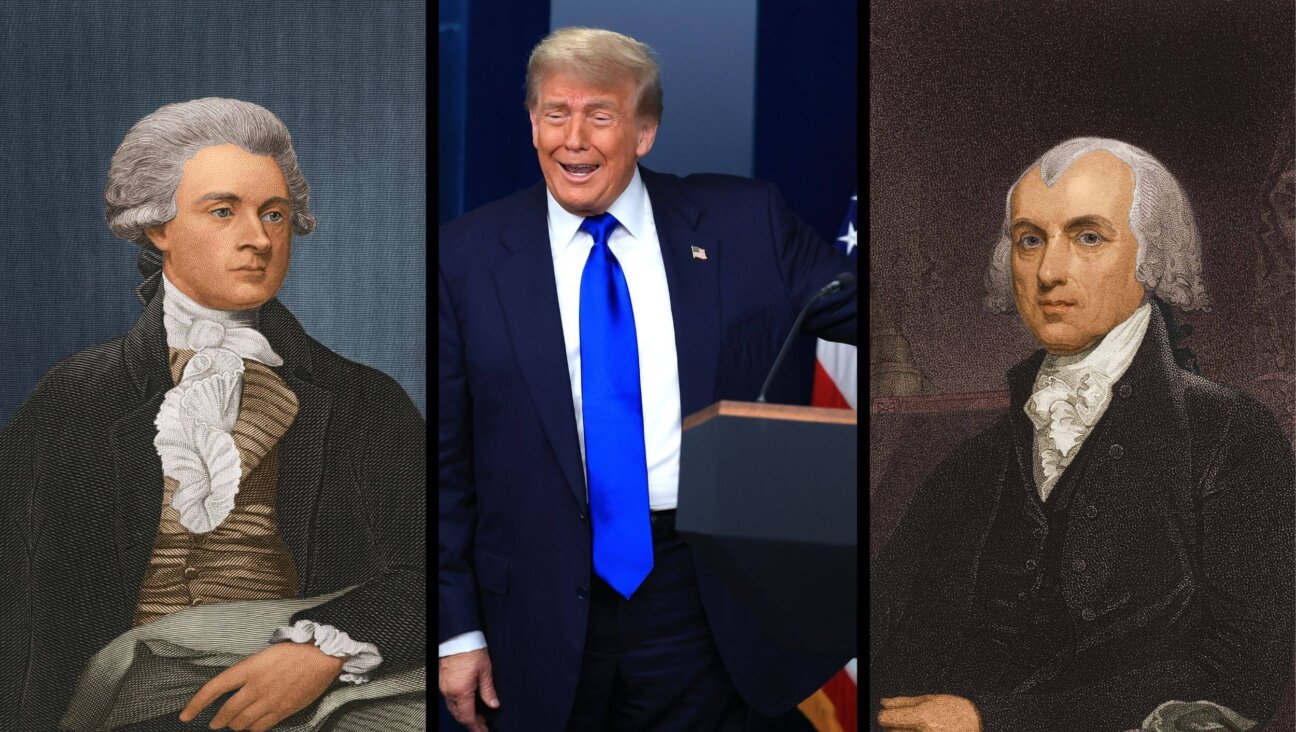If ‘Palestine’ Jerseys Incite Hatred, What About JNF?

Graphic by Angelie Zaslavsky
Normally, when a sports team decides to redesign its uniforms, the decision isn’t considered a major news story. But when Chile’s El Palestino soccer club began wearing jerseys that show the entire map of Israel as Palestine, it met with an intense Jewish backlash — and it’s easy to see why.
By using a one-state map of Palestine to replace the numeral one, the new jerseys effectively erase Israel, making it seem like the state doesn’t exist. Of course Israelis and Jews worldwide would take umbrage at this. And, predictably, statements condemning the jerseys poured in this week from all the usual suspects.
According to the Simon Wiesenthal Center’s January 6 statement, the jerseys are not only “inciting hatred among the large Arab community in Chile.” They are also “fomenting a terrorist intent.” The Anti-Defamation League added on January 8 that the one-state map constitutes “inappropriate political imagery” and a “clear delegitimization of Israel.” Both organizations called for the imposition of penalties on El Palestino soccer club.
For these groups to take issue with imagery that depicts Israeli and Palestinian land as a single state makes perfect sense. But El Palestino isn’t the only group to do so: the Jewish National Fund also favors one-state imagery. Their iconic blue donation boxes, ubiquitous in Jewish schools across the globe, feature a map depicting Israel without the Green Line. That means the JNF doesn’t distinguish Israel from the Palestinian-populated West Bank — even though the Israeli government itself officially endorsed the idea of two states in 2009.
Since this observation was the subject of a Forward cover story last week, ADL spokesman Todd Gutnick, whom I spoke to Thursday, was well aware of it. Yet, while he was clear that the ADL believes it’s wrong for El Palestino to use one-state imagery, he couldn’t say whether we could safely assume, then, that the ADL also considers it wrong for JNF to do the same thing. “On that question, I’m going to have to see if I can get someone to give you a call back,” Gutnick said. More than 24 hours later, no one had called.
Asked whether the JNF should also be considered guilty of “inciting hatred” or “fomenting a terrorist intent,” the Simon Wiesenthal Center’s associate dean, Rabbi Abraham Cooper, said no. “My view is, the JNF does not dictate the political policy of anyone… They’re about trees and water and ecology.”
“I get a warm fuzzy feeling when I think back to my childhood and JNF and the pushka,” he added, referring to the coin collection box. “It has zero impact on the political realities of the day.”
Since the same could just as easily be said of soccer jerseys, Cooper explained that El Palestino’s one-state symbolism is different, because it has to be interpreted within a context: the “deeply embedded and constantly reinforced” Palestinian mindset that the goal is to take over all land from the Jordan Valley to the Mediterranean Sea.
“You can say that there are Jews who hold the exact same view,” Cooper acknowledged, “but that’s not currently the reality of the mainstream party [in Israel].” He noted that even though the government in power is a right-wing one, it’s still endorsing and negotiating for two states.
This line of argumentation is debatable, to say the least. Yes, the Israeli government is negotiating for two states, but at every step of the way it’s also increasing settlement-building activity in the West Bank — an activity that invariably makes a two-state framework less likely. In fact, an agreement between Prime Minister Benjamin Netanyahu and far-right coalition partner Naftali Bennett has made it so that the former only keeps participating in the peace process so long as the latter gets to keep building settlements. For Israeli leaders to endorse something on paper even as they knowingly derail it in practice doesn’t exactly lend credence to the idea that they’re creating an appreciably different context for symbol interpretation than that created by the Palestinians.
Like the one-state map on El Palestino’s jerseys, the map on JNF’s blue boxes is a political symbol. And it’s one that stands to have a negative impact on the prospects for a two-state solution. Just ask the millions of Jews who were exposed to those innocent-looking collection boxes as kids. Ask them how old they were before they realized there was something on that one-state map called “the West Bank.” And something called “occupation.” Ask them if being surrounded by symbols that pretend those things don’t exist didn’t have a hand in shaping their political consciousness.
Symbols — and especially maps — are rarely politically neutral. If the Simon Wiesenthal Center and the ADL want to condemn one-state symbolism, that’s all well and good. But they should do it consistently, not just when the one state being depicted is Palestine.























